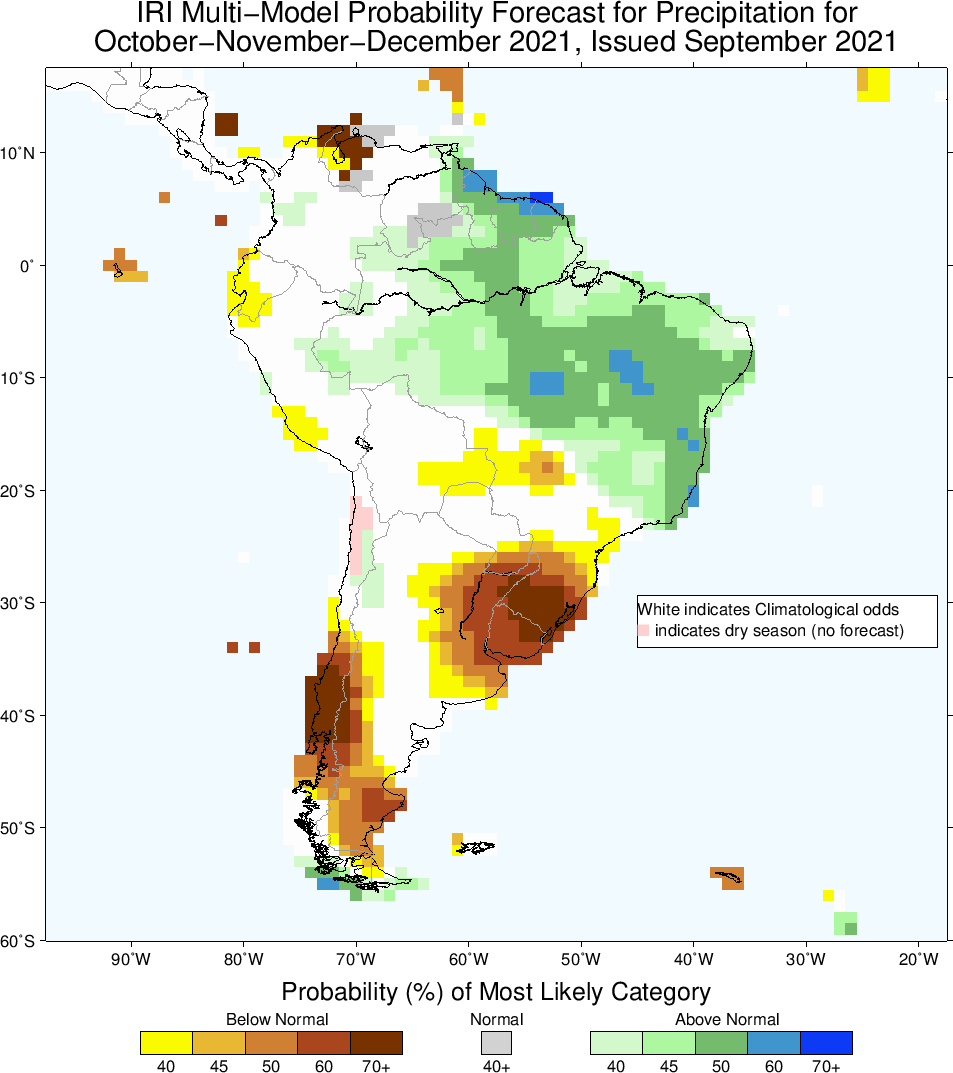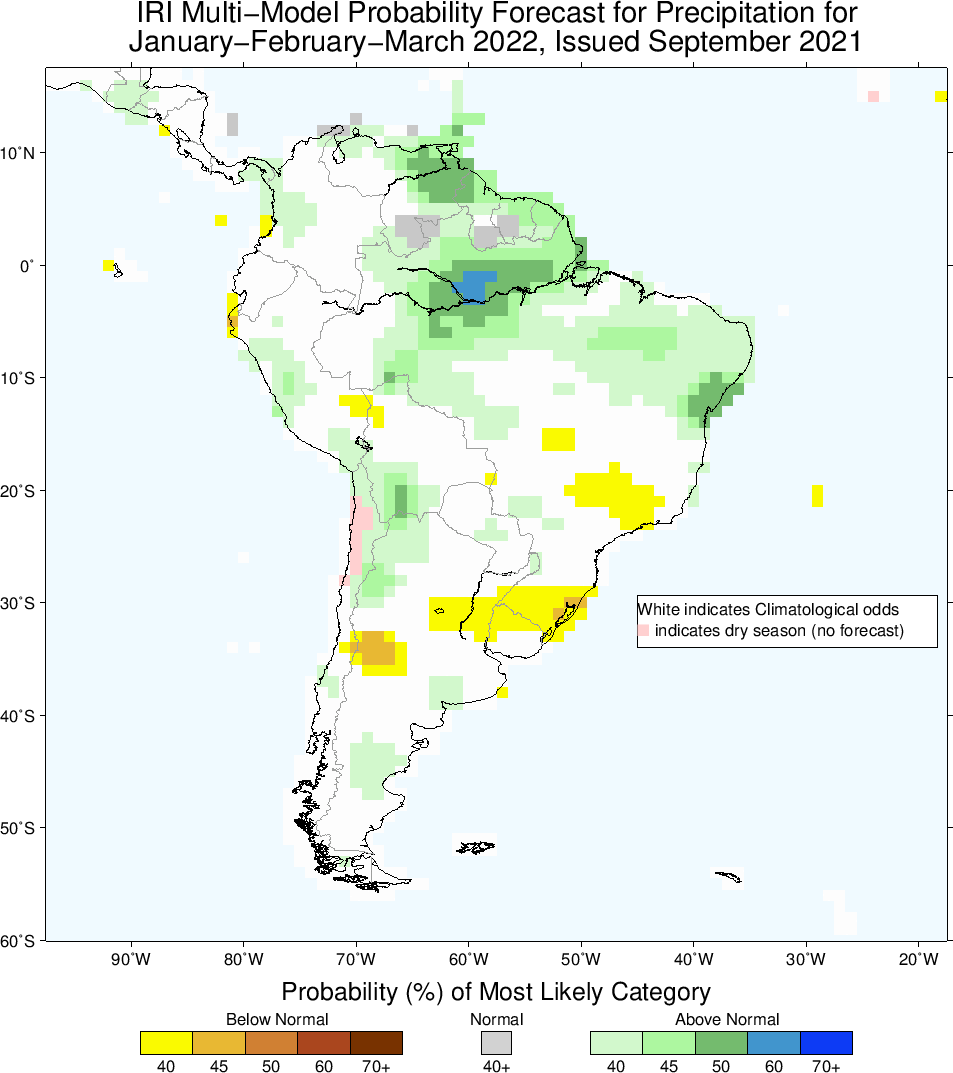The rain will be irregular during the soybean cycle in Rio Grande do Sul. And important information is worth it: La Niña does not prevent rain, including some intense rainfall. The issue is that the phenomenon does not guarantee a good distribution of precipitation during the cycle. And the producer knows better than anyone that a heavy and above average rainfall is useless during vegetative development and that there is a lack of water precisely in the most critical stages, such as flowering and grain filling.
Forecast for the coming months in Rio Grande do Sul
Looking at the forecast for the coming months, despite the heavy rains recorded in September, the month of October should already have below average rainfall and a decrease in soil moisture in the West Frontier and Campanha areas. In the northern half of the state, despite the forecast of less intense rain than in the previous month, the accumulated amount will still be sufficient to maintain soil moisture.
La Niña does not prevent rain
Something written above is that La Niña does not prevent heavy rain, but makes the precipitation more irregular. And precisely in November, more recent simulations indicate an increase in rainfall over Rio Grande do Sul. But this should not last long, since in December and during much of January, the regionalized droughts return, especially over the southern half of Rio Grande do South.
Finally, between the end of January and the end of February, although rainfall remains below average, there is an indication of a little more regular rainfall over Rio Grande do Sul. time that the next crop may have a slightly better performance, especially in the northern half of the state, a region that tends to have higher accruals than the southern half of the state in the summer.
 |  |
Probability of above or below average rainfall for South America between October and December 2021 and between January and March 2022: Rio Grande do Sul with more than 70% chance of below average rainfall in the last quarter of this year and in 40% chance of below-average precipitation in the first three months of 2022 (Source: IRI)
Source: Climatempo.




